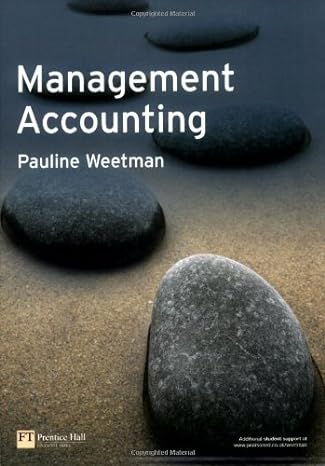This extract discusses the costs that are relevant to an organisation that is already benefiting from relatively
Question:
This extract discusses the costs that are relevant to an organisation that is already benefiting from relatively low labour costs.
In a vast sprawl of inter-linked factory buildings in southern China, 25,000 people are toiling to turn out tiny electric motors that are used in a variety of consumer and industrial products worldwide. Their labour underlines how the trend towards outsourcing in production – seized on by western manufacturers in recent years – makes very little sense for China’s fast expanding economy.
The depth of manufacturing activity within the plant network in Shajing – run by Johnson Electric, the Hong Kong company
– is so extensive that its workers even make small washers, in volumes running at 2bn a year, rather than follow the accepted route of buying such cheap and standardised components from outside groups . . .
. . . Johnson’s ‘do-it-yourself’ approach is driven largely by two factors. First, China has relatively few small, technically advanced suppliers that are in a position to make components to the company’s exacting requirements. Second, low labour costs at Shajing provide little incentive for Johnson to look for cheaper or more efficient subcontractors . . .
. . . Since the cost of employing the factory workers is very low – wages plus related costs come to roughly Rnb1,000 (£83) per month per person – these expenses account for only 5% of production costs at Shajing. Materials expenses comprise the rest.
The Hong Kong company routinely casts around for suppliers that can provide raw materials at a lower cost. However, there is a limit to which it can beat down prices of items that are largely sold as commodities. The skewed nature of the plant’s cost structure provided little reason for Johnson to look closely at ways to reduce production costs by measures that are not linked to the wages of employees, such as by new assembly techniques or automating tasks.
Even so, the head of strategic marketing says, Johnson goes to some lengths to buy modern, highly accurate machines from well-known Japanese or European machine tool makers to cut costs of various in-house production steps. But the plant investment bill is, as is the case of factor labour costs, again much smaller than that for factory materials. ‘I don’t want to tell you the actual figure but [investment] costs are a lot lower than you might think,’ says the head of strategic marketing.
Discussion points
1 What are the relevant costs that are used by Johnson Electric to justify continuing production inhouse?
2 What are the non-cost factors that are relevant to Johnson’s decision?
Step by Step Answer:






